
| 
|

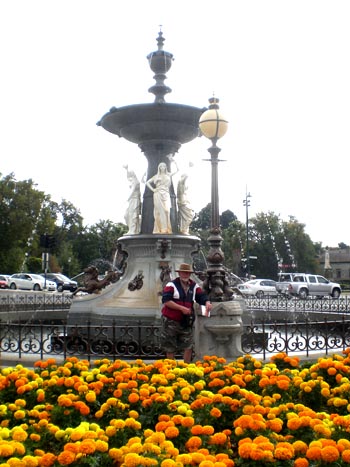
Friends Newsletter No. 54
October 2013
Friends are the guardians of Malvern's water heritage (Malvern Gazette 1 March 2013 p.14). We are an independent voluntary group who relentlessly promote research, conservation and celebration of the Springs, Spouts, Fountains and Holy Wells of the Malvern Hills and of Great Malvern as a Spa Town.
Springs Spouts and Fountains elsewhere - Fountain of Gold, Bendigo
This water feature we have nicknamed the Fountain of Gold. The picture was taken during a field trip earlier in 2013 to the town of Bendigo in Victoria, Australia. But it's not just the flower bed that led to us renaming it. This once wild town grew up as a result of two local women finding gold in Bendigo Creek in 1851. Approximately nine billion dollars worth of gold was found, making it one of the richest goldfields in history.
The Alexandra Fountain was a manifestation of the riches that abounded. The fountain was officially unveiled by His Royal Highness Prince Albert Edward Victor of Wales on 5th July 1881. It is constructed from 20 tonnes of granite and includes dolphins, unicorns, nymphs and allegorical figures. Standing a daunting 28ft high above the level of the roadway, it is situated in the middle of the major road intersection in the town and is in good working order. Other things to do there include seeking out the giant bats that lurk in the nearby park and riding the trams to the tramway shed where they still conserve and operate the towns historic tram system.
Picture - Bruce sitting under this amazing fountain wearing his Australian Bush Hat.
Gullet Quarry - named after the part of the body most affected when tombstoning?

Andy Laffan has contacted us regarding the George Bernard Shaw Mulbery tree. 'I just thought you might be interested in a sculpture I created back in 2008. It was carved from the remnants of the original Mulberry tree which was blown down by gales in 2000 and is currently on public display at the Coach House Theatre in Malvern.' See the picture right - the dimensions are 150 x 220 x 400 (mm).
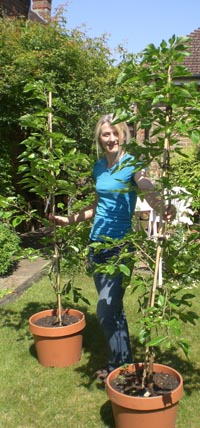
In our newsletter 52 we raised the plight of the Gothic Well and the blocking off of the street entrance. We submitted on behalf of Friends, a letter of concern to MHDC Planning Dept. They have now investigated and reply that whilst it is disappointing that the original features of Gothic Well have been blocked up, it is considered that the works to the wall would be classed as maintenance/alteration to the wall, and as such are permitted development by virtue of Class A, Part 2 Schedule 1 of The Town and Country Planning (General Permitted Development) Order 1995. We can only thank Paul Clements of Planning Dept. for investigating the circumstances and hope that some future owner of the property will wish to restore the unique original features.
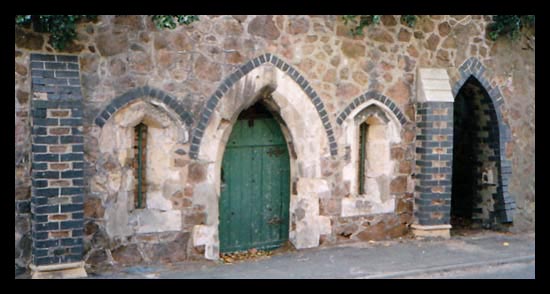
Dr Gully's Liverpool Chalybeate Spring
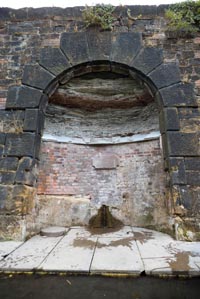
Liverpool was developing as a port and needed building stone as early as the 16th century and a suitable quarry was dug not far from the docks. In 1773 the quarry workers discovered a chalybeate (iron-bearing) spring. It was thought then, and it is still said, to have medicinal properties and be efficacious for stomach problems, rickets, sore eyes, nervous disorders, lowness of spirit and loss of appetite. In their History of Liverpool of 1810, John Corry and Thomas Troughton reiterated Dr Houlton's claims of the water's efficacy. He said that, among other things, it promoted appetite, aided digestion, 'strengthens the stomach caused by excess', strengthened the whole constitution after debilitating illnesses, was useful in diarrhoea, diabetes, gout of the stomach and bowels, and was useful in the first stages of consumption 'if the matter spit up be good pus', and in the more advanced stages of consumption.
Dr James Gully become Malvern's most famous and wealthy hydropathic doctor in the 19th century. Circa 1814 the young James Manby Gully emigrated from Jamaica to Liverpool. The Gully family lived in a double-fronted house in Upper Parliament Street, a short walk from the chalybeate spring. This raises the question, when he was living near the old quarry did he get involved in any way with the healing spring? Was this the inspiration for his subsequent interest in the water cure? The spring and quarry are sited on St James' Mount, which was created as the first Liverpool Park in 1767. This was a place to promenade and provided a viewpoint over the harbour and town. The old quarry was landscaped and, until 1936, was used and known as St James' Cemetery. The Mount was the site chosen in 1901 to build a new Anglican cathedral. Thus the spring would likely have been used when the Gully's were living in Liverpool by the public for its curing properties. Unlike Malvern's Hills pure water or Leamington's saline, which can both be bottled and exported, chalybeate water needs to be drunk at source: the iron remains in solution until it is mixed with air, upon which the ferrous oxide separates and forms an orange deposit wherever it falls, and the water is far less efficacious when drunk. It is interesting to note that when Dr Gully later arrived in Malvern he secured the Chalybeate Spring or Dog Well as it was previously known for his patient's water cures.
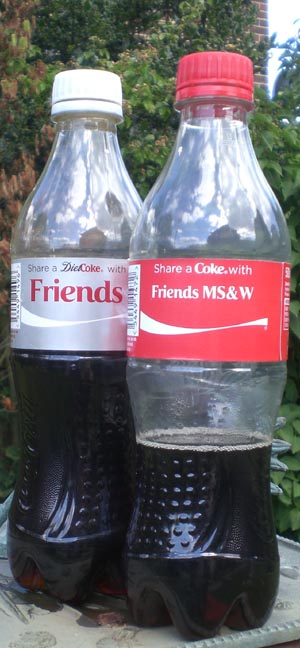
The old quarry can be seen today with its impressive gravestones and the spring making a central feature. One of the two entrances to the cemetery is through a stone arch from Upper Parliament Street, where the Gully family lived. In 1830 Dr Gully's mother died and was buried in the cemetery. Also Dr. Gully's sister is buried there. Did Gully see invalids drinking at the spring when he attended the funeral? It is said that the chalybeate spring is Liverpool's last running spring but, it seems, almost nothing is known about it. Might it have inspired Dr Gully to come to Malvern, and to secure Malvern's Chalybeate Well for the benefit of his patients?
It takes a lot of bottle - That's what Friends are for
Have you spotted these collector bottles around Malvern recently? We were delighted to see that Friends were featured on a bottle of Diet Coke and then to our amazement we see that Friends MS & W are on a bottle of regular Coke. Keep a look out for this unusual piece of Malvern memorabilia.
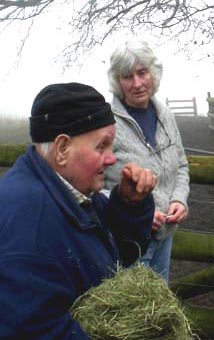
Roly leaves us but the legend lives on.
We were very sorry to hear of the death of Roly Bayliss in August 2013. He was a local Malvern Hills commoner who grazed his animals on the hills. He became legendary when he grazed goats near Holywell, allegedly illicitly, which brought him into conflict with the Conservators. The spring outside his home however became known as Goat Spring because his goats were kept in the vicinity. In later years the story of the goats was something that always brought a smile to his face when mentioned. He was a great Friend and will be missed. For more details of Goat Spring go to www.Malvernspringsandwells.com and click on number 70.
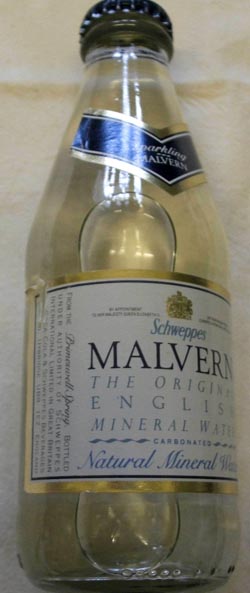
In the picture Cora chats with Roly Bayliss.
70 Words for Water
It is widely believed that Sanskrit, an Indo-Aryan language, is the oldest and most systematic language in history. It was developed at least 6,000 years ago and is associated with the language of India. Today it is the primary liturgical language of Hinduism and a literary and scholarly language in Buddhism and Jainism. Sanskrit contains so many words that, with affixes, can express almost anything. For example, there are 70 separate words to describe water. In English, if we talk about hot water, we add the prefix 'hot': Sanskrit has one word - usnodaka. If we talk about a water melon, we add the suffix 'melon': in Sanskrit one word, suvartula, says it all.
Here are some Sanskrit words that reflect water from the Malvern Hills:
kupajala - spring water
vahasa - a spring from which water flows
utsya - water from a well or fountain
audapana - water raised from a well or drinking fountain
nivesya - water spout
dharmakupa - holy well
viksara - mineral water - see picture
To find out more visit the spectacular Hindu Temple in Neasden in North West London. NW10 8LD.
Email: springs@thespas.co.uk (click here to send an email)
Website: Click Here
SUPPLEMENTARY INFORMATION
 Newsletter Archive which can also be accessed from our WEB SITE INDEX.
Newsletter Archive which can also be accessed from our WEB SITE INDEX.
Friendship - There is no charge made for joining Friends of Malvern Springs and Wells. Just let us have your email address and we will send our newsletters, which are usually two monthly. Please be aware that some email addresses block large circulation emails. Do feel free to participate in our activities by contacting us below.
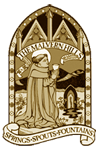
Best wishes, Cora & Bruce
Tel. 01737 213169 email bruce@thespas.co.uk
Tel. 01684 561215 email cora@malvernspa.com
1) TOPOGRAPHICAL LOCATION:
Malvern Hills - arguably Britain's original National Park
3) INFORMATION CATEGORY:
Springs and Wells General InterestHistory & Heritage
Friends Newsletter


